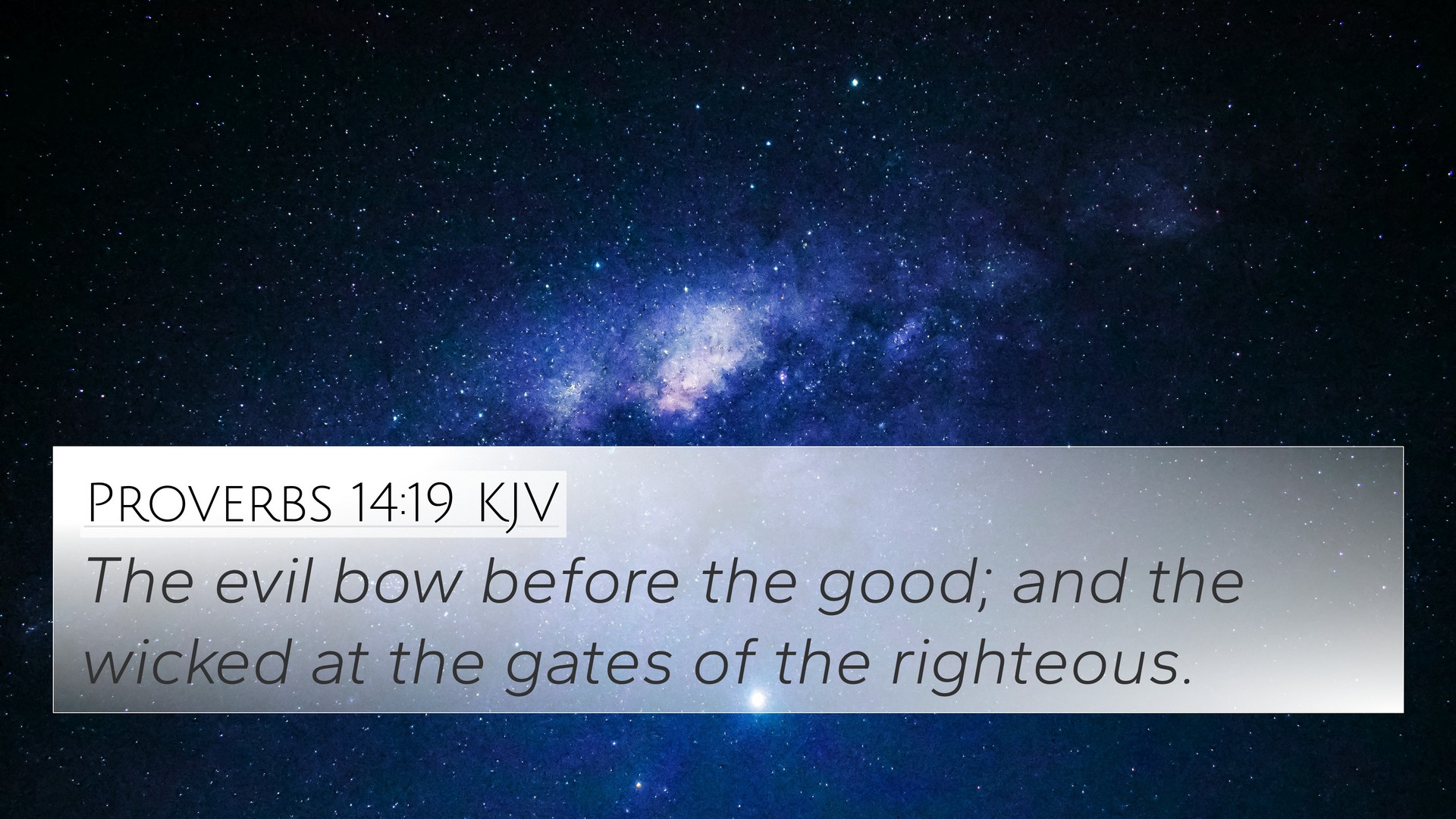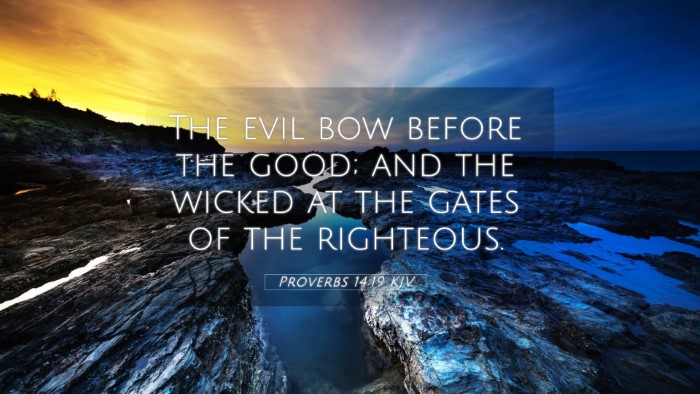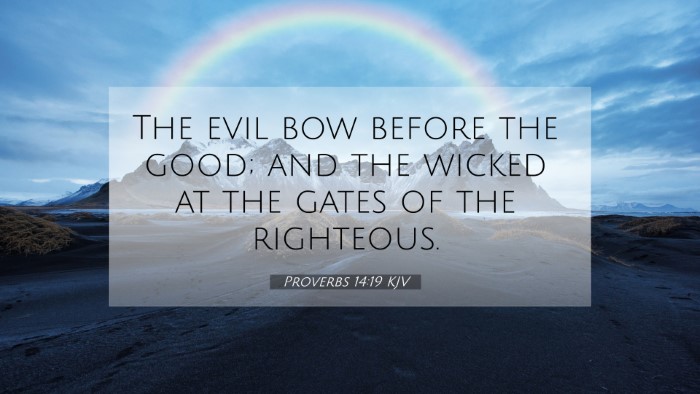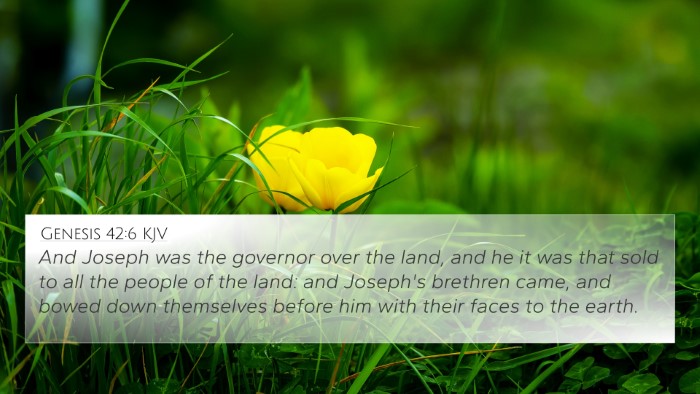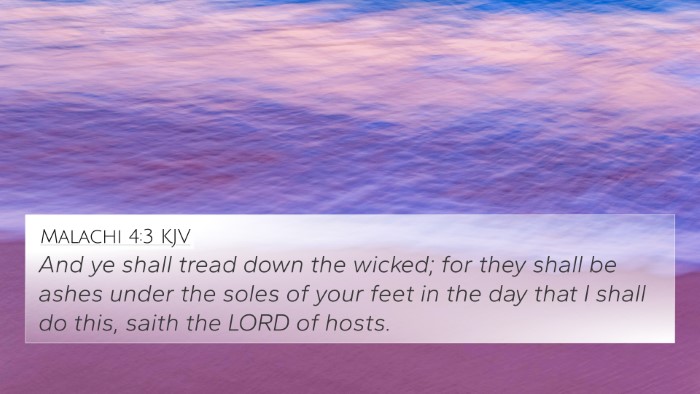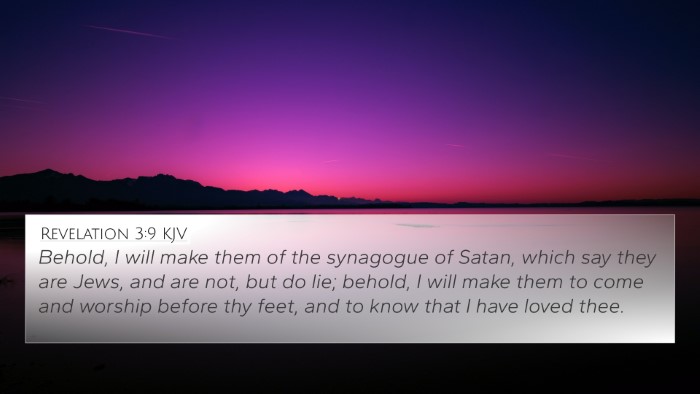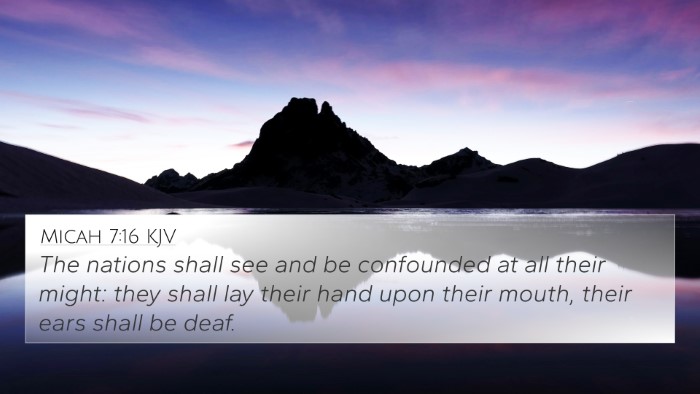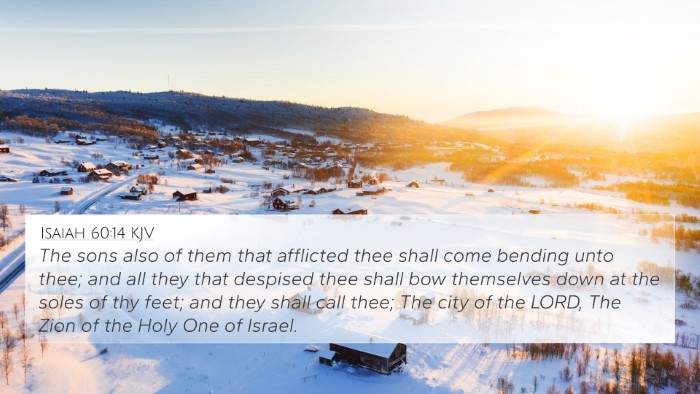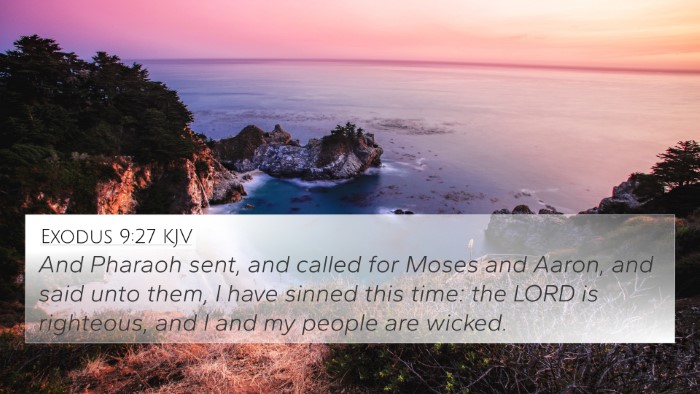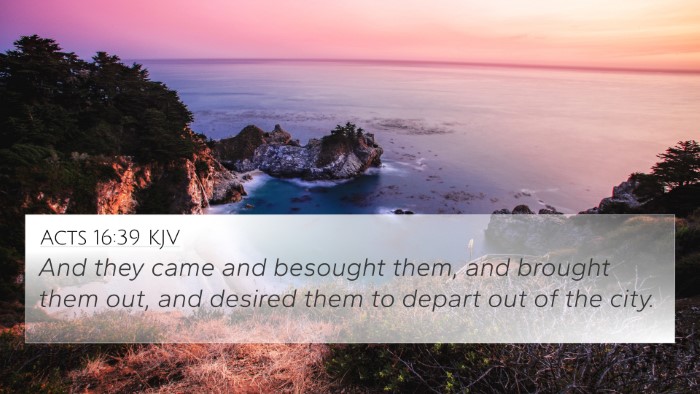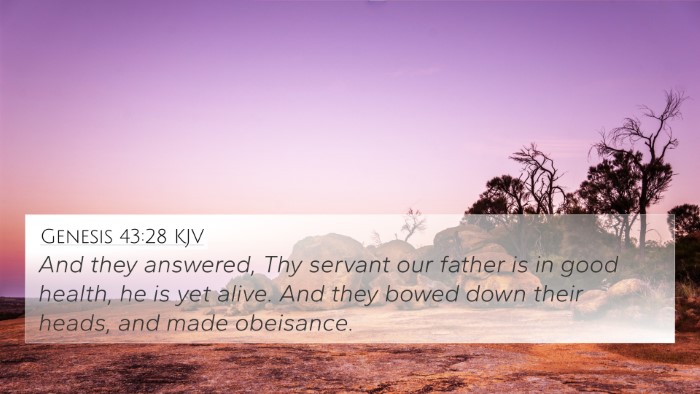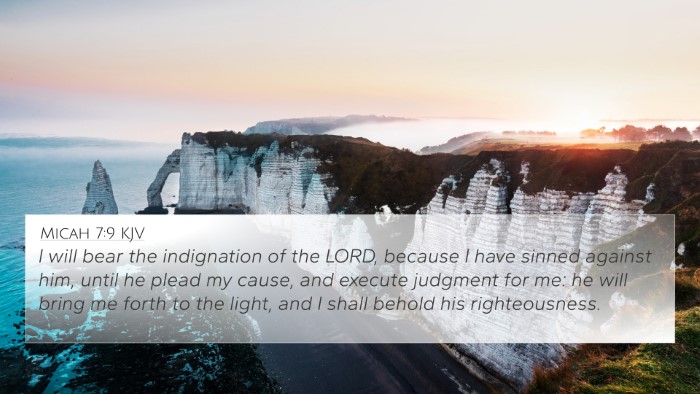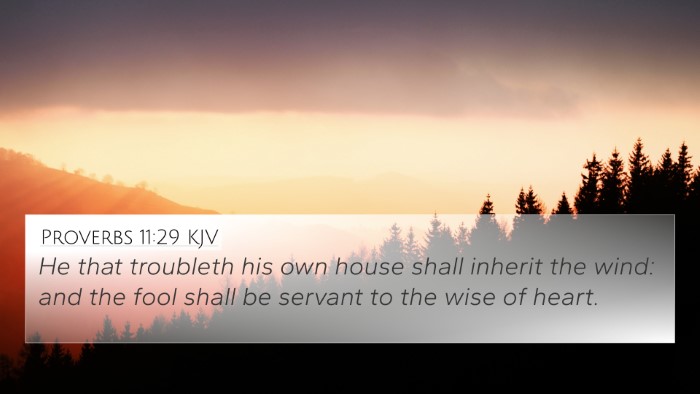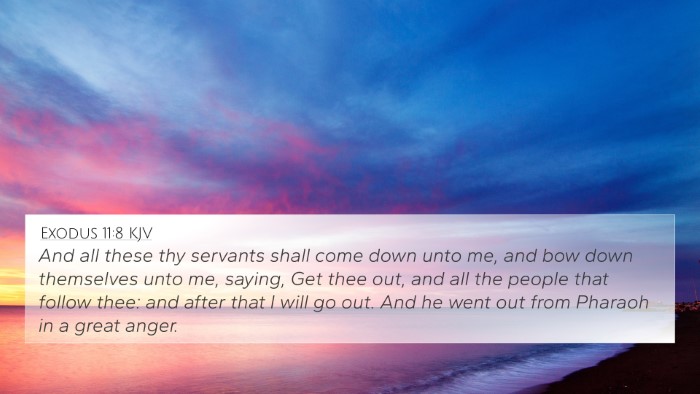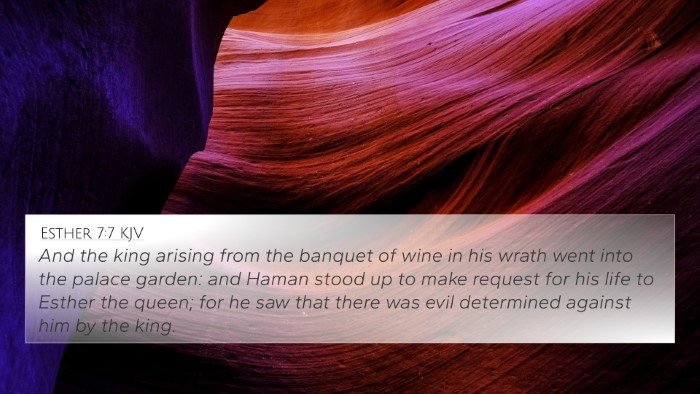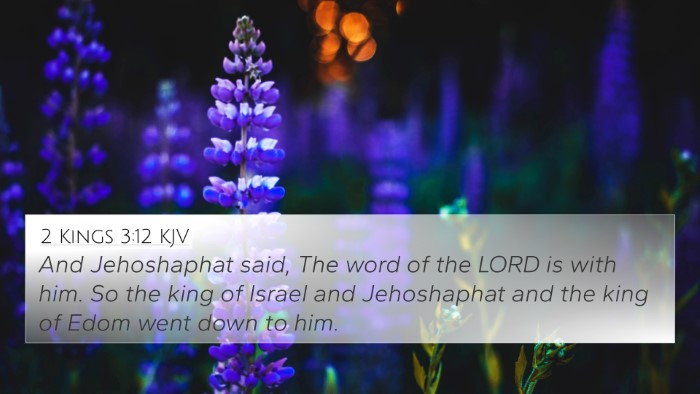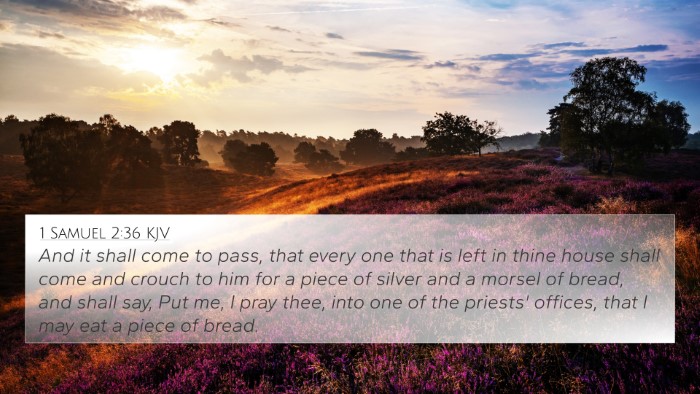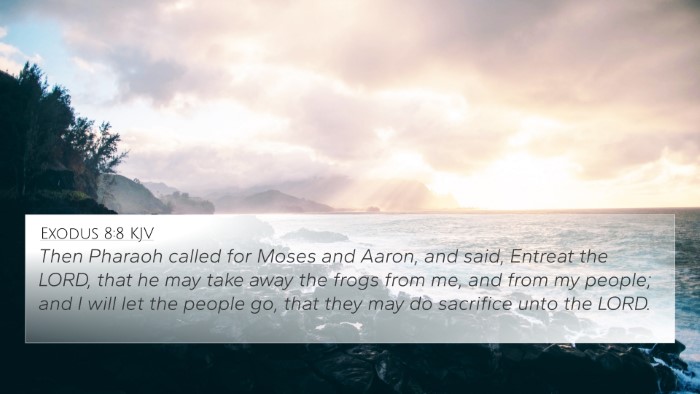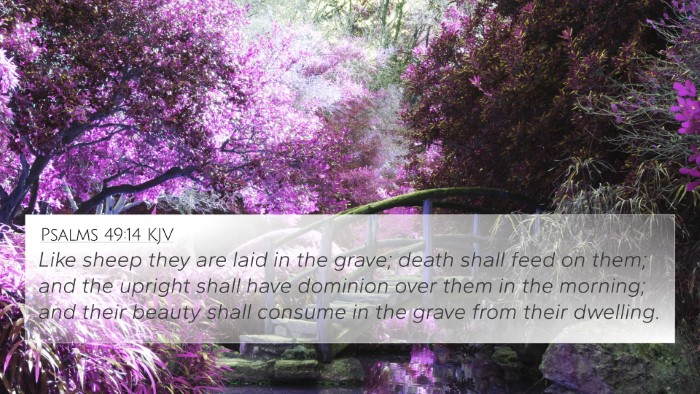Understanding Proverbs 14:19
Proverbs 14:19 states: "The evil bow before the good; and the wicked at the gates of the righteous." This verse presents a profound observation about the relationship between righteousness and wickedness, revealing insights that can encourage and instruct believers.
Summary of the Verse's Meaning
This verse highlights two significant themes:
- The Supremacy of Goodness: The pictorial imagery in the verse suggests that ultimately, evil must bow to good, representing a divine order where righteousness prevails.
- The Humiliation of the Wicked: The phrase "the wicked at the gates of the righteous" indicates a position of disgrace and subjugation that the wicked experience in relation to the righteous. It showcases the inevitable downfall of the wicked.
Commentary Insights
Matthew Henry's Commentary
Matthew Henry emphasizes the contrast between the characters of the righteous and the wicked. He states that, although the wicked may seem to thrive for a season, they will eventually find themselves in a position of subservience, recognizing the righteous as superior.
Albert Barnes' Notes
Albert Barnes expands on the implications of this verse, noting that evil individuals will ultimately acknowledge the authority of good when faced with the consequences of their actions. Barnes also reflects on how this aligns with the overall theme of Proverbs that values wisdom and righteousness.
Adam Clarke's Commentary
Adam Clarke discusses the societal implications of this verse, suggesting that righteous individuals will experience favor and respect even from those who represent evil. He notes that the righteous are rewarded with dignity, even in the presence of their adversaries.
Bible Cross-References
To enhance the understanding of Proverbs 14:19, here are several cross-references:
- Psalms 37:9: "For evildoers shall be cut off: but those that wait upon the LORD, they shall inherit the earth."
- Proverbs 11:21: "Though hand join in hand, the wicked shall not be unpunished: but the seed of the righteous shall be delivered."
- Psalms 1:6: "For the LORD knoweth the way of the righteous: but the way of the ungodly shall perish."
- Psalms 15:4: "In whose eyes a vile person is contemned; but he honoreth them that fear the LORD..."
- Isaiah 60:12: "For the nation and kingdom that will not serve thee shall perish; yea, those nations shall be utterly wasted."
- Ecclesiastes 8:14: "There is a vanity which is done upon the earth; that there be just men, unto whom it happeneth according to the work of the wicked..."
- Proverbs 12:21: "There shall no evil happen to the just: but the wicked shall be filled with mischief."
Exploring Connections Between Bible Verses
When examining Proverbs 14:19 within a broader scriptural context, we can identify several connections between Bible verses. Here, we explore links that enhance our understanding of righteousness and its contrasting adversary:
- Thematic Bible Verse Connections: Proverbs frequently contrasts the righteous and the wicked, creating a recurring dialogue throughout the text.
- Bible Verse Parallels: Many verses in the Psalms reaffirm the idea that the righteous will ultimately prevail over the wicked, reinforcing Proverbs 14:19.
- Scriptural Cross-Referencing: By utilizing tools like a Bible concordance, one can identify various passages that echo the themes of Proverbs 14, creating a rich tapestry of related concepts.
How to Use Bible Cross-References
Utilizing cross-references can profoundly enhance your study of the Bible.
- Use a Bible Cross-Reference Guide: These resources categorize verses that share themes, making it easier to find connections.
- Conduct a Cross-Reference Bible Study: This method encourages deep exploration and comparative Bible verse analysis to grasp the continuity of themes of righteousness.
- Engage in Inter-Biblical Dialogue: Reflect on how different authors and contexts influence the understanding of thematic connections, such as righteousness versus wickedness.
Conclusion
Proverbs 14:19 offers profound insight into the dynamics between good and evil, serving as a reminder of the eventual triumph of righteousness. By employing scripture cross-referencing, readers can discover extensive theological insights that deepen their understanding of this verse and its implications across the biblical narrative. This method of studying the Bible allows believers to gain a broader perspective on the nature of good and evil and how they interact throughout the scripture.
